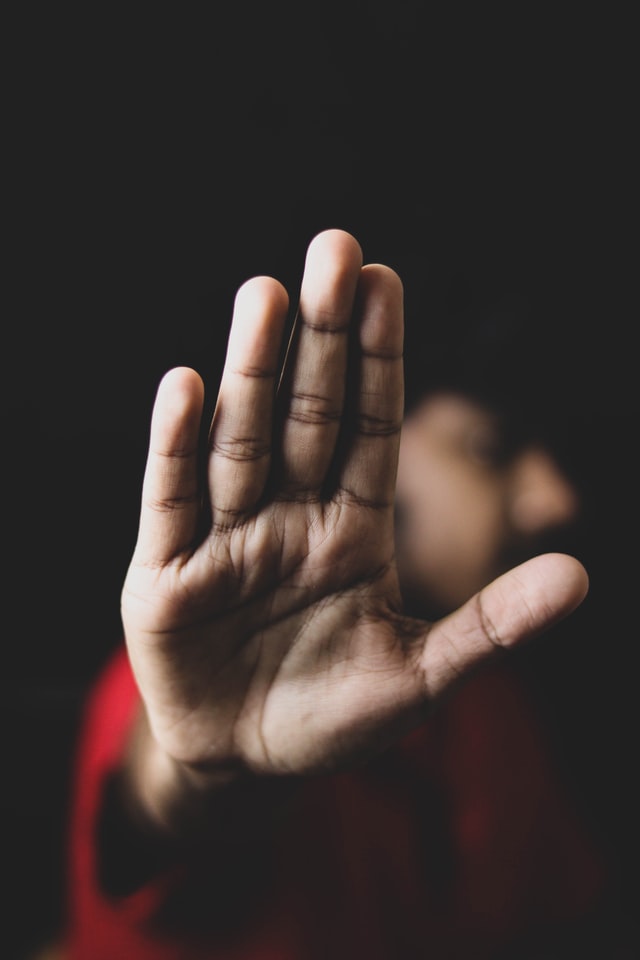Adolescent attacks: why a child becomes uncontrollable during adolescence, what types of it are most common, a manifestation of aggressive behavior during puberty, and the main methods of dealing with it. Adolescent bullying is a side effect of puberty that manifests itself in response to a growing child’s rejection of reality. These can be separate parts of it (parents’ attitudes, peers, complexities, the influence of social networks, etc.) or a willingness to accept reality in general. In any case, the aggressive behavior of a teenager is a problem for everyone around him and himself. Therefore, it requires a solution.
Table of Contents
Causes of adolescent aggression
Adolescence is a conditional separation between child and adulthood. The adolescent goes through the changes on a physical, physiological, and psychological level. That is, not only does his appearance change but so does his inner attitude, which “filters” the perception of the world around him. Such changes are stressful for the child. Therefore, under unfavorable conditions for him, he “breaks down” and becomes aggressive. Depending on the circumstances of the situation, the causes of adolescent aggression are usually divided into several groups.
Family causes of aggressive behavior in adolescents
Most psychologists attribute parental influence to the origins of inappropriate behavior in sexually mature children: their parenting style, behavior, attitudes toward the child, and each other. And given the youth’s growing awareness of the environment, all the “mistakes” of relatives can be triggered by aggression.
The main reasons for the family’s aggression among teenagers are:
- Education extremes … In this case, the most important parenting system and attention to the child. In addition, both excessive attention (overprotection) and its lack will be equally dangerous. In the first case, the teenager rebels and thus protects his right to freedom of choice – what to wear, with whom to communicate, and so on. Second, he chooses the methods of aggressive behavior to attract the attention of his parents. Likewise, a teenager may violate the rules of strict parenting or respond with aggression against unauthorized use.
- Social status and living standards … As with parenting, either poverty or parental well-being can have a negative effect on adolescent behavior. For example, some children may be angry that their parents are not able to give them what they want. It can be an expensive phone, powerful computers, fashionable clothes, various leisure activities, and so on. In the same way, reverse aggression can trigger an opposite situation when a child has absolutely everything he wants. In this case, a corrupt teenager simply considers himself superior to others, which gives him the right (as he thinks) to behave provocatively.
- Domestic Violence … A teenager’s aggressive behavior can be a reaction to the aggression he sees in the family. And here are some possibilities for the development of events: the first – he involuntarily tries to defend himself against an abusive parent or relative, the second – he copies it. Equally devastating to a teenager may be the ridicule and humiliation of his parents in front of other people.
- Jealousy … Sometimes a child in adolescence chooses a line of resistance behavior out of jealousy. The subject of adolescent jealousy can be a new family member: the second child that has appeared in the family, a new chosen mother (or the chosen father), and his (or her) children.
- Family Traditions… Adolescents’ aggression may be due to the rejection of traditional family traditions. It can be a habit to spend free time, dress code, community circle, career choice or life partner, etc. Through aggressive behavior, the teenager tries to break these restrictions and go beyond them.
Biological causes of adolescent aggression
Changes within the baby can significantly “spoil” the baby’s blood during puberty. Hormone radiates in him, his system for perceiving the world is “bursting at the seams.” And if parents do not notice these changes in time, the child may “go down”.
The main biological causes of aggression in puberty are:
- Young maximums … During adolescence, a child desperately searches for himself, his values and attitudes change very rapidly and the perception of the environment has two foods – either bad or good or black or white. There are no halftones in a teenager’s life. Therefore, a new model of the child’s behavior, which the parents do not correct in time, can turn into a protest against the inconsistency of reality with the “standards” he invented.
- Puberty … Disruptive hormones also often influence adolescent behavior and make them uncontrollable. In addition, it is difficult to control them, not only for parents or teachers. They themselves cannot always calm their attraction. That is why it is important to direct this young energy at the right time and in the right direction – in dance or sports.
Personal causes of aggression in adolescents
Not only hormones can turn a baby into a difficult teenager, but also its internal state. It can occur in the process of growing up, inheriting genes or appearing as a parent. In any case, it will be directly related to the personality of the adolescent.
The most important personal reasons for the formation of adolescent aggression:
- Self-doubt … Very often, behind the mask of an aggressive, worldly teenager, there is a child who desperately needs support and understanding. It is a lack of confidence in himself, his strengths, and his abilities that causes him to build walls of denial and opposition around him. The same feeling pushes him to assert the costs of the weaker or to deserve authority over the stronger.
- Guilt … This factor can accompany the already mentioned self-confidence or be a consequence of it. It is easy to make a teenager feel guilty. In addition, he can shape it himself. But this does not mean that he openly acknowledges it. Many teens hide their feelings of inferiority complex through aggressive behavior.
- Annoyance … Another personality disorder that causes a hypersensitive person to develop a sexual reaction to even the most harmless things.
- Pessimism … Distrust of people and life in general, a pessimistic view of things that surround a teenager can have a significant impact on his behavior.
The feeling that he (or she) does not live up to the expectations of the world around him (parents, loved ones, friends, teachers, and other people who are important to the child) can also make the teenager aggressive. In this case, the inner aggression towards oneself is projected onto others.
The reason for adolescent aggression
It is often possible to arouse aggression during adolescence due to certain circumstances that have had a significant impact on the child’s psyche. It can be an event related to the physiology of a teenager: serious illness or its consequences, trauma, or physical defects that limit full life. Inferiority in this case can lead to aggressive behavior.
The destructive effects on adolescents’ psyche of certain substances “absorbed” by children from the Internet, television, and computer games in unlimited quantities have already been proven. The most dangerous are movies, games, videos, and posts with aggressive content. A teenager plunges into such an atmosphere and tries on the role of a negative but handsome hero and carries it with him to reality. He chooses powerful methods to solve problems.
The reason for showing yourself “in all its glory” in a negative sense can also be the desire to please the representative of the opposite sex or to impress her (him). If a child does not have a normal concept of gender relations, then there is no right example of such relationships, he himself develops a line of behavior which in his opinion will show his strongest sides.
Variations of adolescent aggression
Depending on how the teenager’s rebellion manifests, his resistance behavior can be divided into several types.
The main types of aggression in adolescents according to the manifestation:
- External aggression or deter aggression … Such aggression is directed at everything that surrounds a teenager – people, animals, things. It can take the form of fights, hooliganism, vandalism, insults, humiliation, profanity, and abominable behavior. As a way to face the world, teenagers can use smoking, alcohol, drugs, promiscuity, and complication.
- Latent aggression or automatic aggression … If dissatisfaction and rejection are directed at the teenager inwards, it is rather difficult to notice it outwards. Such children do not clearly show their dissatisfaction with reality, but the accumulation of negative energy still finds its way into a nervous breakdown, depression, neurological disease, somatic diseases, and even suicide.
Form of adolescence aggression with the manifestation:
- Declining aggression … It is the enmity that manifests itself in response to the same hostility. That is, it does not appear constantly, but “sometimes”. The trigger here can be a rude attitude towards a teenager – in transport, school, shopping, or on the street. And a teenager simply cannot stop himself from reacting rudely to such behavior.
- Purposeful aggression … This is a conscious, constant behavior of a teenager, manifested in disrespect for others, rudeness, fights, and provocative behavior. And it does not depend on whether they have been rude to him or treated them well. Most often, this method of self-expression is chosen by children with a natural tendency of leaders, who simply cannot cope with their temperament without outside help.
Manifestation of adolescent aggression
Rebellion in a teenager’s soul depends on many factors: the nature of the child, the attitudes of parents, friends, peers, living conditions, and so on. As a result, the manifestations of adolescent rebellion can vary greatly – from regular hard answers to a question or comment to utterly immoral behavior or cruelty.
Key manifestations of aggressive behavior in adolescents:
- The physical form of aggression … sets itself the goal of causing harm, pain, and damage. Here, both inanimate objects and living things can act like victims. It manifests itself in the form of hooliganism, and vandalism on a variety of scales – from breaking up disks at home to destroying amenities (monuments, benches, bus shelters, etc.). In the worst case, aggression is directed at people and animals. This is the most dangerous form of adolescent aggression, as adolescents have not yet fully developed the concept of responsibility, including in someone else’s life.
- Oral forms of aggressive behavior … Lighter manifestations of teenagers’ protests, but no less harmless. Because even verbal abuse and humiliation from other children can have catastrophic consequences for the child’s psyche. Verbal aggression can manifest itself in the form of reasoning, denial, profanity, criticism of other people, threats, ridicule, malicious jokes, manifestations of hatred, and resentment.
- The expressive form of aggression … manifests itself in brightly colored “tones”, that is, in the form of physical movements (gestures, strokes), prominent facial expressions (masks, dissatisfied facial expressions), and/or verbal expression in raised tones or in the form of non-standard vocabulary.
- Direct aggression … In this case, the entire adolescent’s negativity is directed at a certain object, which causes these very negative feelings in him. It can be expressed physically and orally.
- Indirect form of aggressive behavior … This is a form when his environment “returns” – objects, objects, people, and animals “due to some problems, shocks, or just because of the bad mood of a teenager.
- Hidden aggression … Protests that manifest themselves in the form of ignoring requests and comments. In this case, the child is completely calm but at the same time does not hear what is being said to him. And if he hears, he is in no hurry.

Ways to combat teen aggression
The method of overcoming adolescent aggression will depend primarily on the specific case – the child’s own characteristics, the extent and type of aggression, and the reason that caused it. Therefore, the approach to solving such a problem should be purely individual. However, there are some general rules about parenting behavior that will not only help to correct the situation but can also be used as a preventative measure to prevent aggressive behavior in adolescents.
The most effective advice for parents on how to deal with adolescent aggression on their own:
- Review your parenting norms and behaviors: it is often mistakes in the educational process or parenting behaviors that become the main reason for the rebellious behavior of adolescents. Remember that no matter how your child talks about you, you are his main reference point. If you want to make it better, start with yourself. Be a positive example.
- Be discreet and tolerant. Maintaining self-control, even in the most difficult situations in a family where there is a problem, a teenager can “kill two birds with one stone”. First, calm and sensible analysis of the situation does not give further reason for aggression on the part of the adolescent. Second, this way of solving the problem shows the teenager that powerful methods are far from the only option for resolving conflicts effectively.
- Give your child the freedom to make and take decisions. Of course, this council also has its own nuances – such freedom should not be absolute. You adults, experienced people, still need to filter out safe solutions that can be “dropped” and unsafe solutions that could harm your child.
- Be your embarrassed teenager’s best friend. It is only natural that not all children have the right quality – intelligence, beauty, health, strength, ingenuity, and talent. Therefore, in the growing person, support exactly what he has. Praise him, support his efforts, celebrate achievements, and diagnose mistakes and mistakes. And do not just talk – spend more time with him outside the home. Organize common recreation and leisure, support his interests, involve him in socially beneficial matters, and promote respect for elders.
- Put their boiling energy back on track. Try to find something to do for your rebel that will help direct his riots into a positive vector – hobbies, hobbies, sports, dance, music, and so on. Ideally, this should happen in the context of the teenager himself. Find another option that will rip him off the internet or the effects of a bad company. And it is possible that the first attempt to convert adolescent energy will be successful. But this is not a reason to quit.
- Be sincere. Adolescents are extremely sensitive, so they feel sweet. Do not forget that inattention to your child during adolescence can significantly complicate not only his life but also the lives of people around him. Including the parents themselves. Adolescent children view themselves as adults, so treat them and talk to them exactly as you would to an adult of your own free will.
Important! If aggression has reached an important level or all attempts to return the child to the “good” position have failed, seek the help of a specialist. Do not waste time – teen aggression does not arise and does not disappear by itself.
Aggressive behavior in adolescents is a sign of discomfort in some areas of a child’s life. And it’s hard enough to fight it. Therefore, you need to listen and participate in your baby’s life, even before puberty. For a child who feels like a full-fledged family member and society as a whole, love, need, competence, self-confidence, and aggression in behavior will simply be unacceptable.









Leave a Reply